HashiCorp Certified: Vault Associate Certification
Compare and Configure Secrets Engines
KeyValue Secrets Engine
Vault's Key/Value (KV) Secrets Engine securely stores static secrets—API keys, certificates, credentials—that Vault doesn’t generate dynamically. You can retrieve these secrets via UI, CLI, or API and integrate with tools like Terraform, Jenkins, or GitLab CI/CD.
Note
Almost every Vault deployment uses at least one KV mount. You can enable multiple KV instances at different paths to isolate secrets by team, environment, or application.
Why Use KV for Static Secrets
- Centralized management of non-rotating secrets
- Integration with CI/CD and automation tools
- Granular access control through Vault policies
- 256-bit AES encryption at rest
| Tool | Use Case | Example |
|---|---|---|
| Terraform | Infrastructure provisioning | terraform apply |
| Jenkins | CI/CD pipelines | Vault CLI plugin for secret injection |
| GitLab CI/CD | Pipeline secret storage | Store Vault token and KV path in variables |
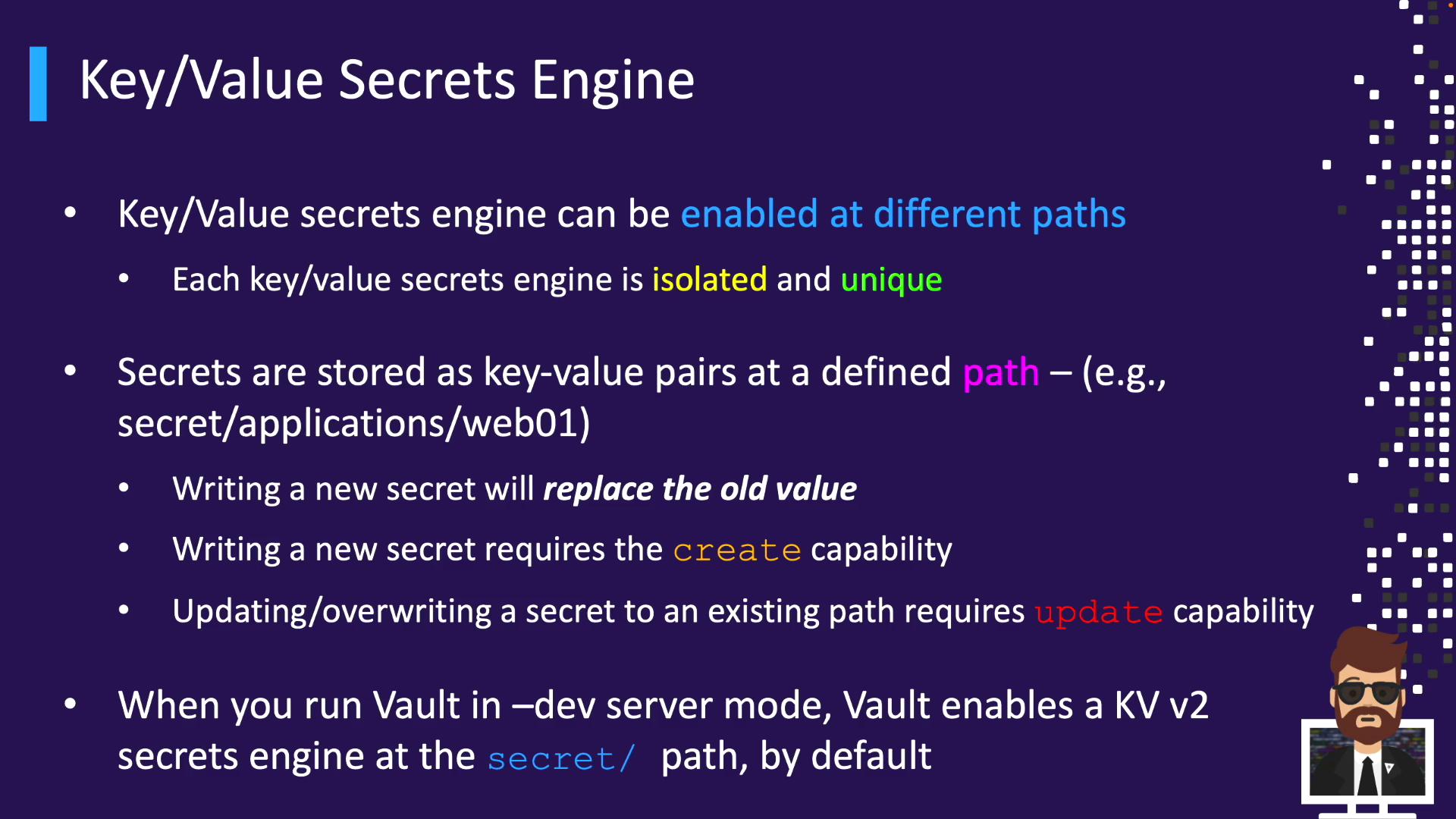
KV Engine Versions: v1 vs. v2
| Feature | KV v1 | KV v2 (Versioned) |
|---|---|---|
| Versioning | No history | Full version history |
| Read behavior | Overwrites on update | Latest by default, can request version |
| Rollback/Undelete | Not supported | Supported |
| Metadata support | No | Yes |
Reading from v2 returns the latest version unless you specify another version.
Enabling the KV Engine
KV v2 is not enabled by default in production.
Via UI
- Go to Secrets > Enable new engine
- Select Key/Value
- Set Mount path (default
kv) and choose version - (Optional) Add description, tune max versions or CAS, configure deletion
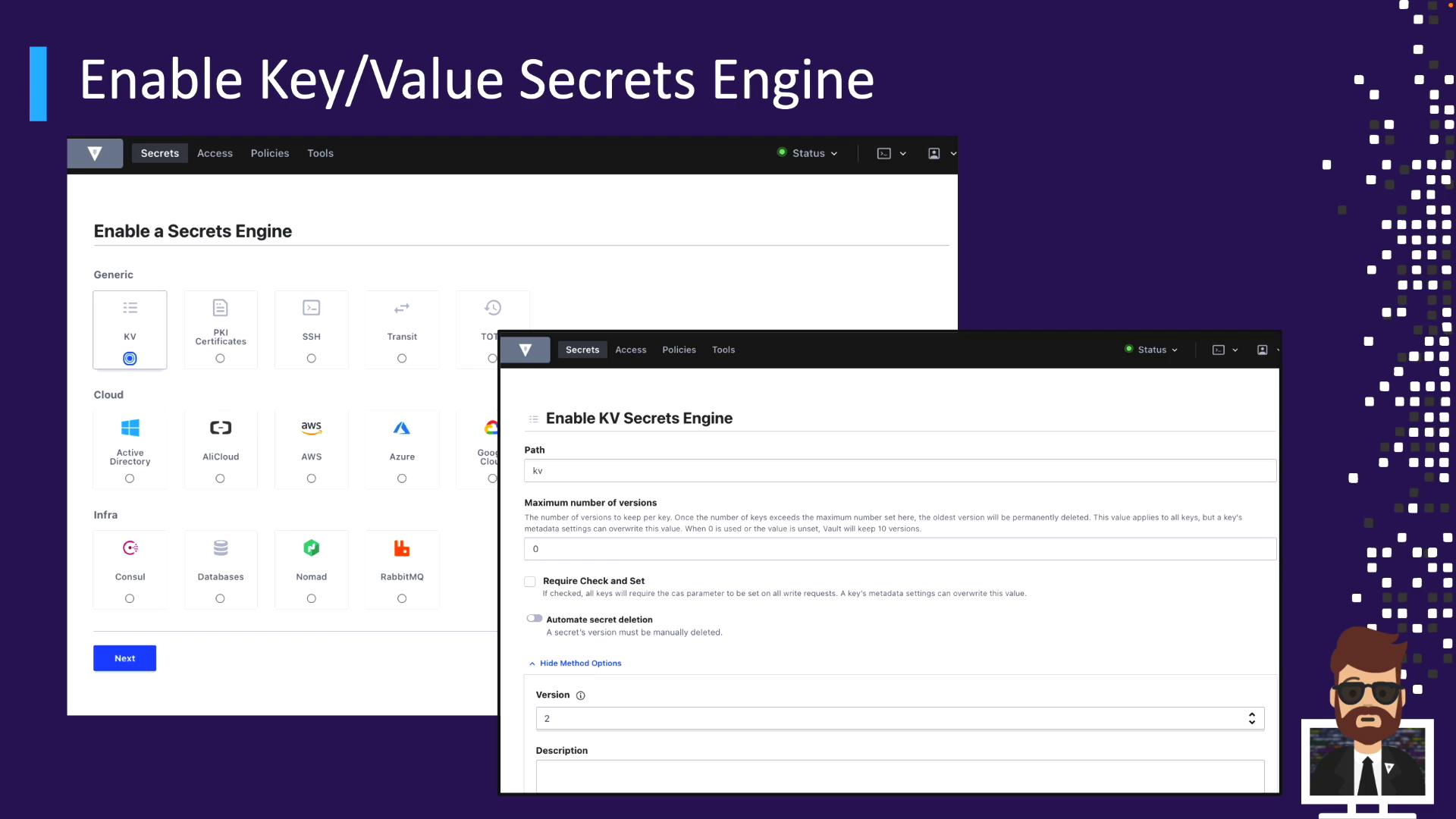
Via CLI
Enable KV v1 at kv/ (default):
vault secrets enable kv
# Success! Enabled the kv secrets engine at: kv/
Enable KV v1 at a custom path:
vault secrets enable -path=training kv
# Success! Enabled the kv secrets engine at: training/
List mounts with version info:
vault secrets list -detailed
# Path Plugin Accessor Options
# ---- ------ -------- -------
# cubbyhole/ cubbyhole cubbyhole_xyz map[]
# kv/ kv kv_abc123 map[] # v1
# training/ kv kv_def456 map[] # v1
Enable KV v2 at a new mount:
vault secrets enable -path=kv-v2 -version=2 kv
# Success! Enabled the kv-v2 secrets engine at: kv-v2/
Verify mounts:
vault secrets list -detailed
# kv-v2/ kv kv_ghi789 map[version:2] # v2
Warning
Upgrading an existing KV v1 mount to v2 is irreversible. Plan carefully before enabling versioning.
Enable versioning on an existing mount:
vault kv enable-versioning training/
# Success! Tuned the secrets engine at: training/
Organizing Secrets with KV Paths
Plan a path hierarchy to simplify policies and discovery.
Option A: Single mount with folders
kv/
├── cloud/
│ ├── aws/
│ ├── gce/
│ └── …
├── automation/
│ ├── dev/
│ ├── prod/
│ └── …
└── data/
├── warehousing/
└── analytics/
Option B: Multiple mounts per domain
| Mount Path | Purpose | Version |
|---|---|---|
| cloud/ | Cloud credentials | v2 |
| automation/ | CI/CD & scripts | v2 |
| data/ | Analytics & warehousing | v2 |
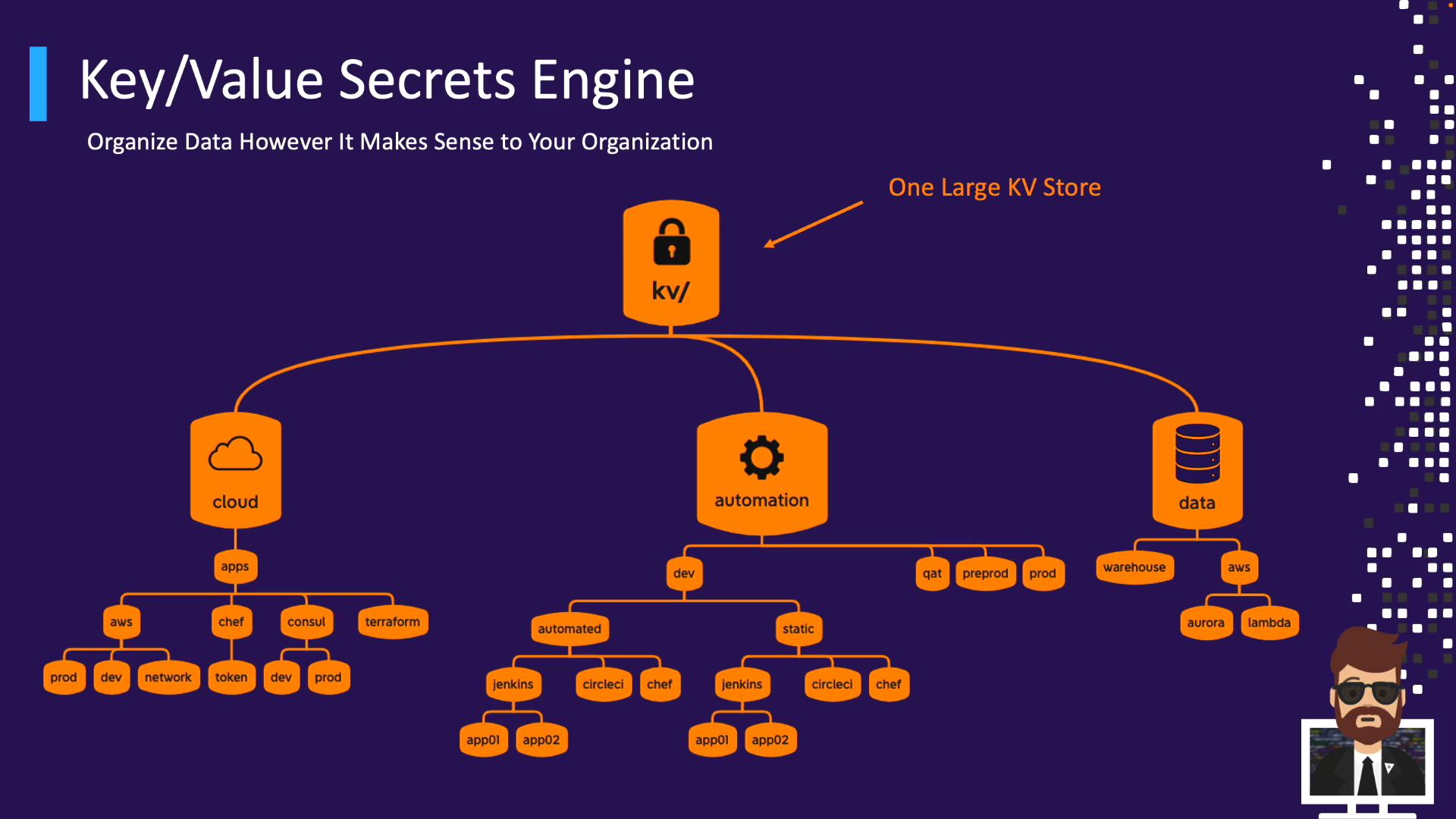

Path Example: apps/
apps/
└─ aws/
├─ prod/ ← { user, password, API }
└─ dev/ ← { certificate, private_key }
- Mount:
apps/ - Secret path:
apps/aws/prod - Read:
vault kv get apps/aws/prod
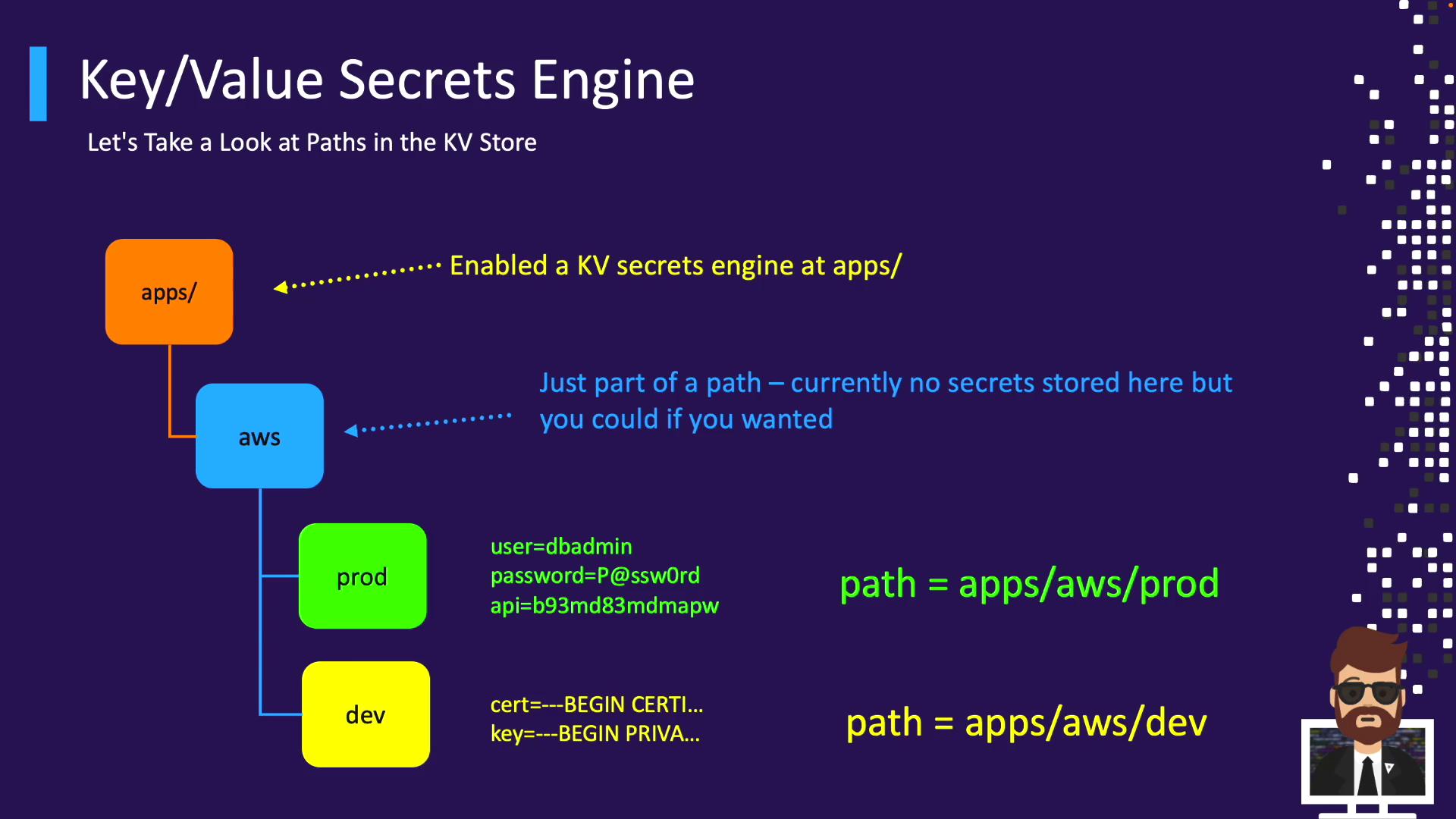
KV v2 Metadata & API Prefixes
KV v2 adds metadata (versions, timestamps, deletion status). It introduces two API prefixes:
data/– stores secret valuesmetadata/– tracks version history
Mounting v2 at cloud/ yields:
/v1/cloud/data/...for secret operations/v1/cloud/metadata/...for metadata
The CLI abstracts these, so vault kv get cloud/apps/aws works without prefix.
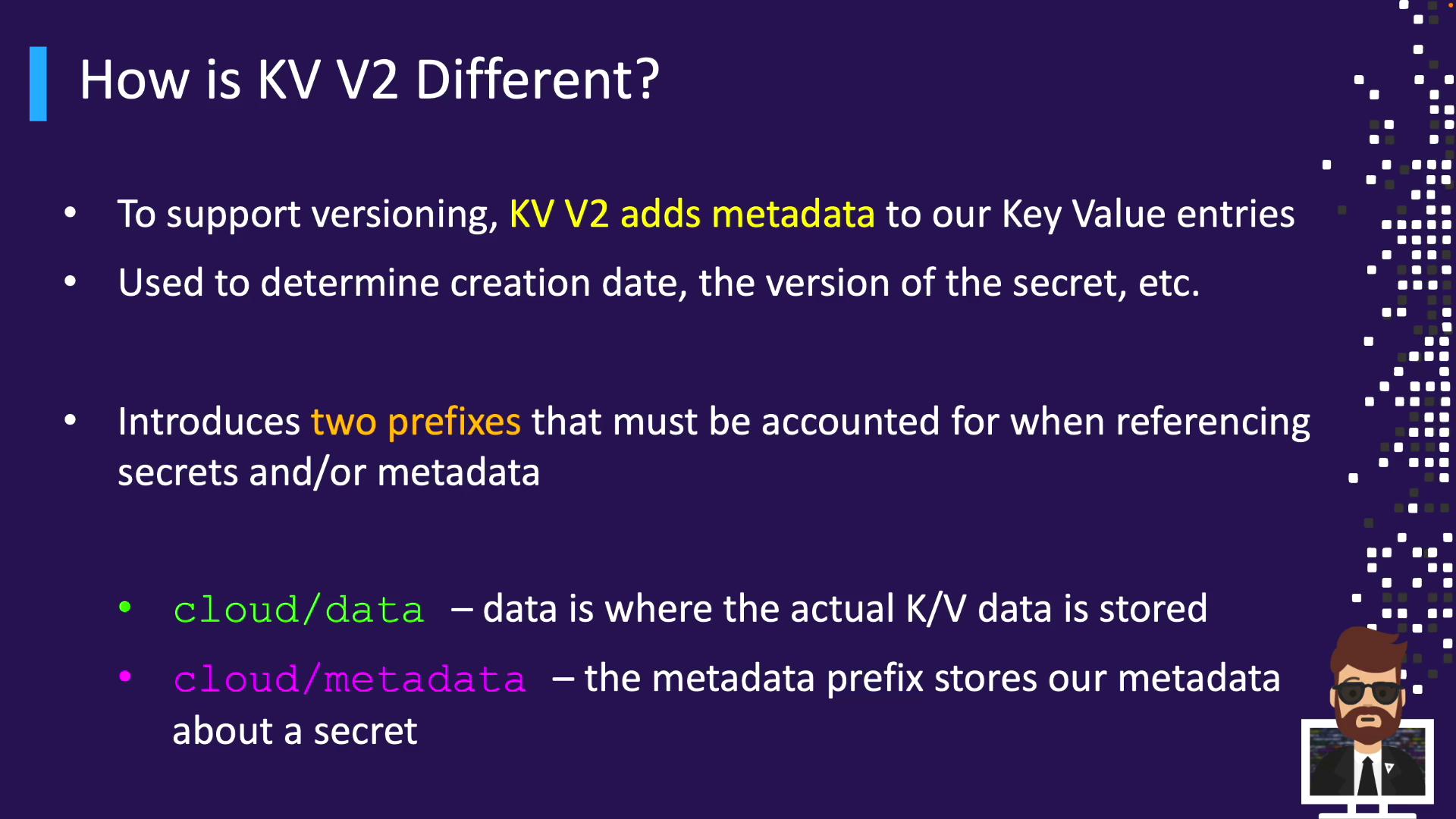
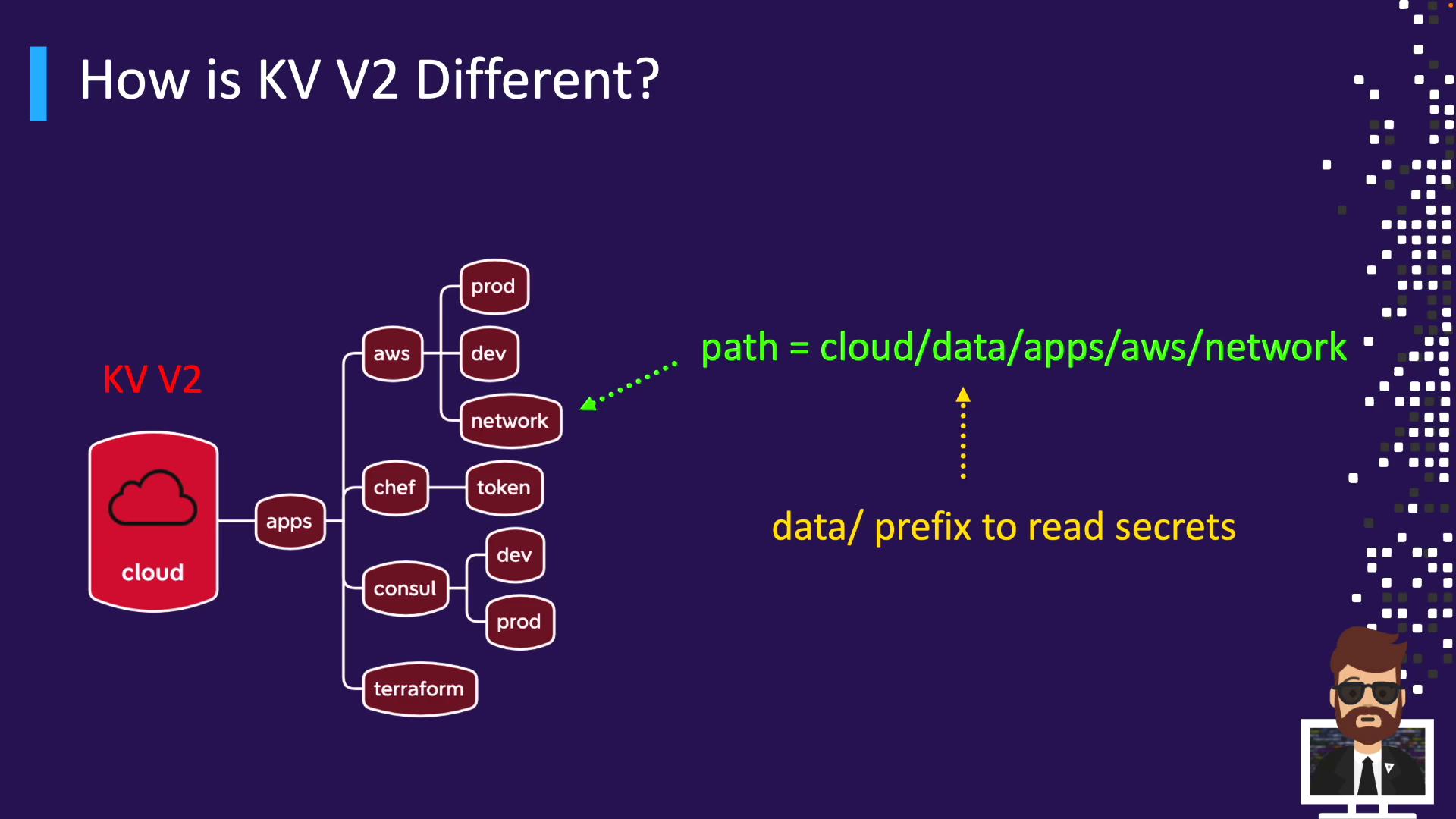
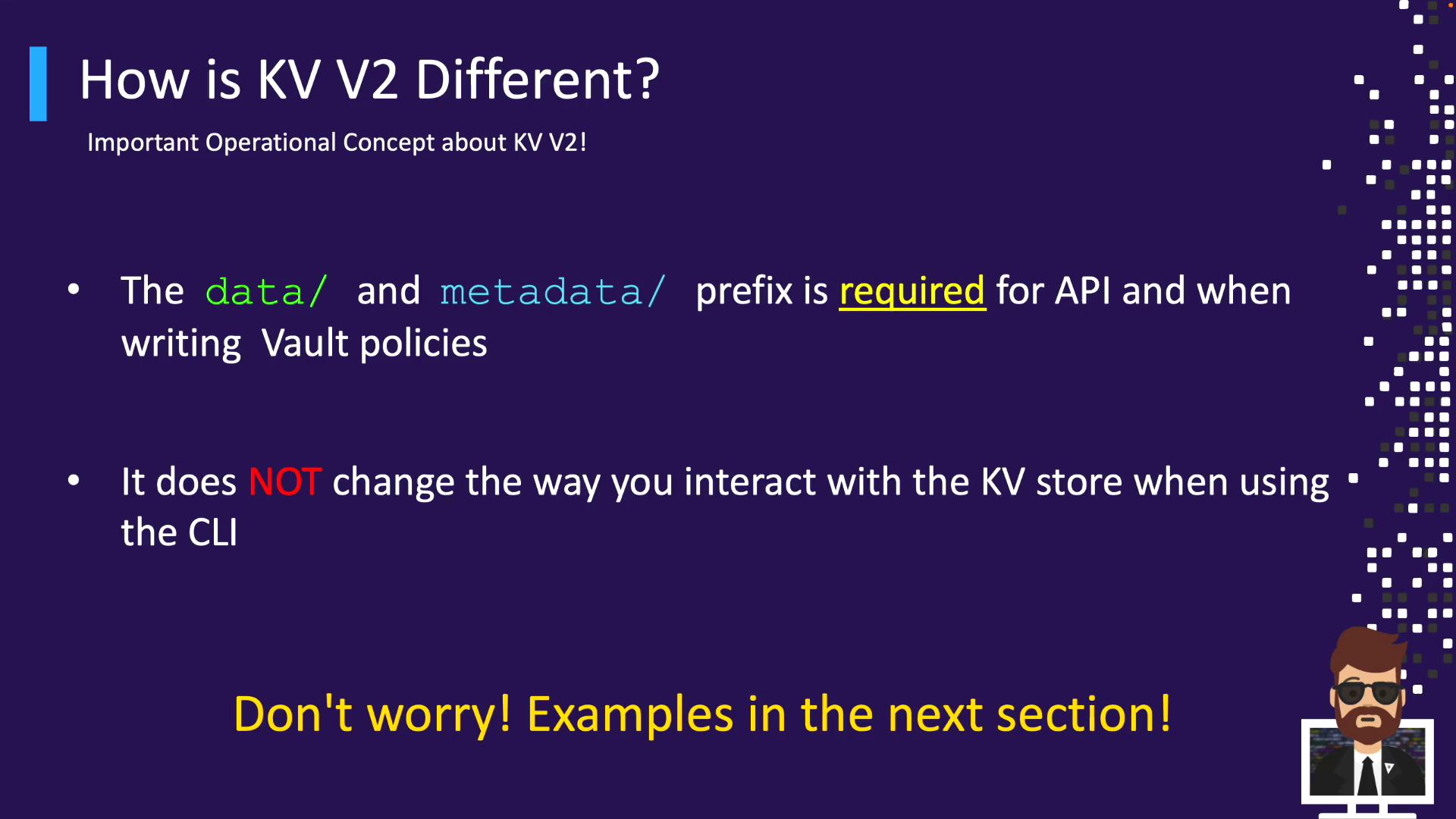
Versioning Workflow in KV v2
Leverage versioning for history, rollback, undelete, and destruction:
- Write v1
vault kv put cloud/apps/aws user=admin password=123 api=XYZ - Update → v2
vault kv put cloud/apps/aws user=admin password=456 api=ABC - Delete latest
vault kv delete cloud/apps/aws - Undelete v2 → creates v3
vault kv undelete cloud/apps/aws --versions=2 - Destroy v3
vault kv destroy cloud/apps/aws --versions=3 - New write → v4
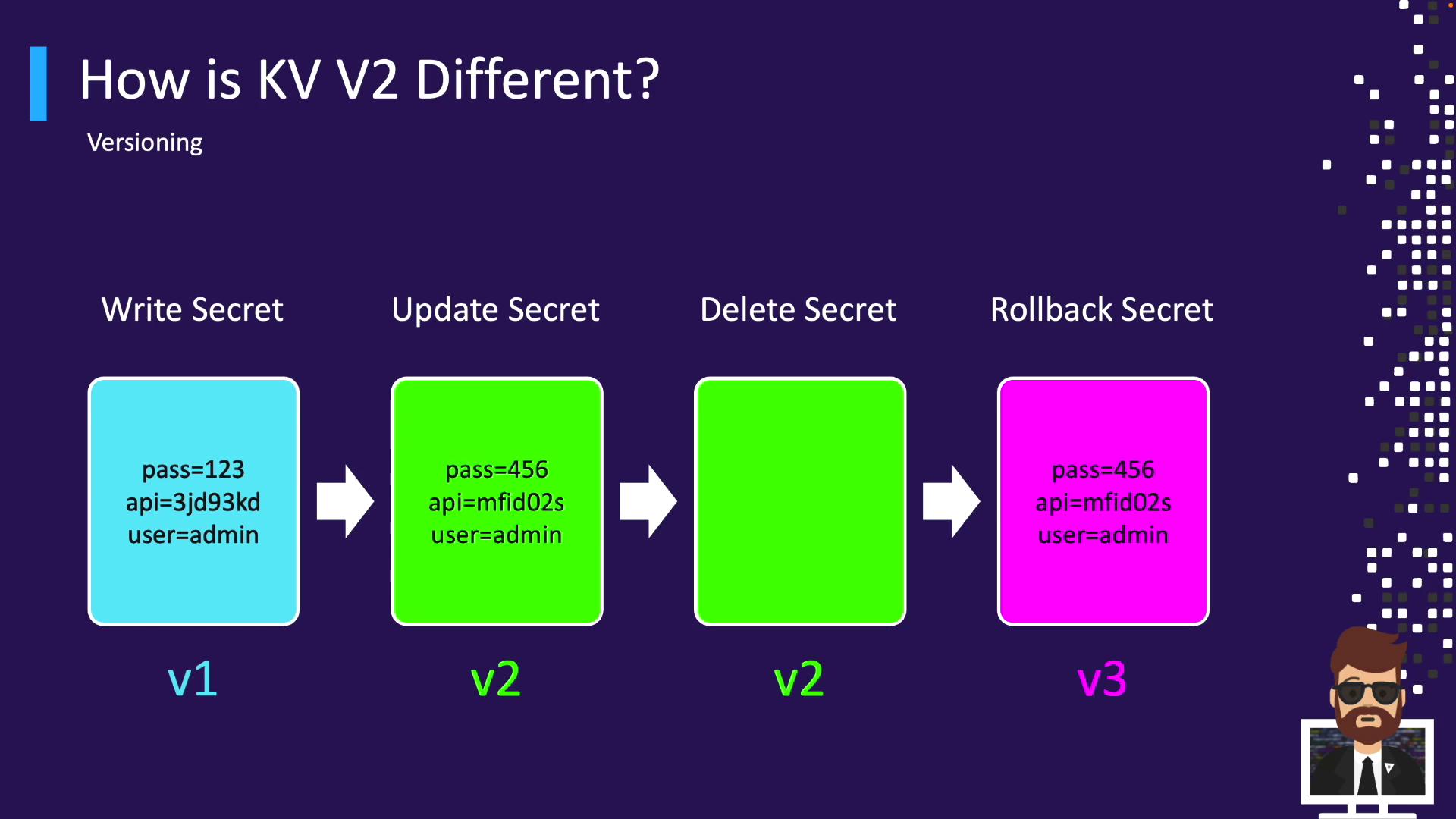
Next Steps
- Practice writing, reading, updating, and deleting KV secrets
- Explore versioning and metadata queries
- Define Vault policies to secure KV paths
Links and References
- Vault KV Secrets Engine Documentation
- HashiCorp Vault Overview
- Terraform Registry
- Jenkins Plugins
- GitLab CI/CD Docs
Watch Video
Watch video content